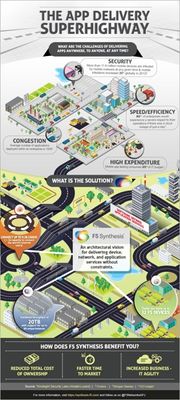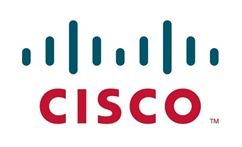f5 synthesis
5 TopicsHybrid SSL Offload configuration
After reading an article about Hybrid SSL Offloading at https://devcentral.f5.com/articles/f5-synthesis-hybrid-ssl-offload I was wondering whether I could find configuration guide that describes how to actually configure this feature in case you have hardware BIG-IP and couple of virtual editions behind it. I would like to use the hardware one for SSL offload and VE for server load balancing and all the goodies.438Views0likes1CommentF5 predicts: Changing demographics influence purchasing behaviours
As early as 2013, Gartner talked of the revolution sweeping the world of mobile payments. Global mobile payment transactions rang in US$235.4 billion in 2013, up 44% from US$163.1 billion in 2012 Mobile payment users in 2013 reached 245.2 million, up from 200.8 million in 2012. Yet another survey conducted by SAP in 2013 revealed: 37% of people polled in Asia Pacific were more likely to use their mobile device to conduct banking activities compared to the global average of 29 percent. A further 37% were ready to purchase goods and services – most commonly clothes and books or e-books via their mobiles - higher than the global average of 26 percent. Against this context, it is hardly surprising then that in 2013 alone, Southeast Asia saw investments to the tune of at least $638 million in the field of e-commerce. International e-commerce giants such as Rocket Internet, Japan’s Rakuten and China’s Taobao have landed on the shores of Southeast Asia. While the initial focus has been on drawing traffic to their online web stores, it is only a matter of time before they start marketing their mobile apps to leverage on the growing affinity for mobile payments and transactions. Line, a messaging app that has 300 million registered users worldwide and 14 million active users in Indonesia alone, is yet another possible mobile commerce giant. Online shopping is slated for continued growth and evolution. The rise of the millennial The rise of the mobile commerce can be directly attributed to the rise of the mobile generation, commonly called the Gen Y & Z or the millennial, who are spearheading this disruption in the way we work, live and play. Fuelled by the need to consume content and purchase on the go, the millennial are likely to own multiple mobile devices. Increasingly they are turning out to be the darlings of all online shopping powerhouses. With a few taps on their smart device, the millennial are spending millions of dollars on everything from music to fashion. They are also building an ever-expanding social network, spurring more socially influenced spending. This scenario of changing demographics driving changing consumption trends, e-retailers as well as enterprises are seeing a sharp increase in expectations of having to adapt to the millennial as consumers and employees. As consumers, the millennial will expect secure access to services from any device. With web applications under increasing attack, fraud prevention will be top of mind. In addition retail sites will have to focus on performance, enhancing mobile and web application responsiveness to enable seamless access and security. Studies have shown that consumers will only wait for 3 seconds for a web page to load before moving to a competitors’ site. Amazon, in fact, estimates a 1% increase of revenue for every 100ms of improvement in page load times. F5's take on the changing demographics In an apps world, it is essential that the delivery and the security of applications in the enterprise are optimized at all times to help organizations seamlessly overcome the challenges outlined above. F5 has gone a step further to provide the various services that an application needs to address application mobility, security, access and identity, performance and availability challenges. – F5 Synthesis! In a world driven by the quest for doing “everything on the move”, where the end-user experience is paramount regardless of location, network, device, or application environment, the Synthesis architectural framework from F5 Networks just works. Here is a visual that will explain and clarify.330Views0likes0CommentsTaking the driver’s seat in the App-centric journey
The app economy has taken hold of the world at lightning pace. It is as much social and cultural as it is economic. At its core is how it affects and engages the wider technology landscape. Connectivity is no longer a mere mechanism of interconnected ‘dumb pipes’. Thanks to the rise of the Internet of Things (IoT), connectivity is evolving into an ecosystem of increasingly intelligent, bi–directional streams of knowledge. This shift to sensor-driven, wireless connectivity for devices, appliances, inert objects from the high-end (e.g. tracking electricity flows for cities) to the mundane (e.g. replacing the milk in your fridge) has taken the ubiquity of the Internet to a new level and is compelling companies of all sizes to transform and adapt. Gartner predicts that by 2020, Internet of Things will create $1.9 trillion of economic value add, globally. In 2009, there were 2.5 billion connected devices, globally; most of these were mobile phones, PCs and tablets. In 2020, Gartner predicts there will be over 30 billion devices connected, of far greater variety. While the demand is pushing new boundaries in connectivity and its applications, the technology ecosystem for enabling the IoT is highly fragmented. In order to make this new layer of interconnectedness work, solutions must be curated from various providers of sensors and communications modules, network management and control systems, communications networks, enterprise applications and customer-facing applications. The network borders as we knew them are collapsing and in their place are seemingly disparate clusters of cloud and mobility, and the ever present generation of new sources of data and higher stream of traffic. For companies navigating this new terrain, management and planning of infrastructure is essential and understanding how to get ‘social intelligence’ in the connectivity fabric is paramount. Intelligent data centres are now in vogue, splitting the control plane with data plane so that data and services can be shared and moved within an expandable network fabric. In order for ‘social intelligence’ to work, data and services need to be orchestrated efficiently and simply from a single point of management. Out of this shift, Software Defined Application Services (SDAS), the next inevitable phase in the evolution of application delivery has emerged. SDAS is the result of delivering highly flexible and programmatic application services from a unified, high-performance application service fabric and serves to solve the significant challenges that the IoT is creating. SDAS relies on abstraction, the ability to take advantage of resources pooled from any combination of physical, virtual and cloud-deployed platforms. SDAS provides answers to new questions enterprises are facing from controlling application delivery via traffic management over broadening applications services to include web application security, mobility, LTE, domain name services in addition to facilitating cloud-ready services. The Synthesis solution is already changing the way we interact with our customers and partners by giving them flexibility and the ability to be as inclusive as they like across their application choices. The elastic, multi-tenant service fabric that delivers SDAS can cluster up to 32 F5 devices deployed across any combination of hardware, software or cloud and supports up to 80 unique instances per device. That translates to a combined throughput of 20 TB and connection capacity of 9.2 billion, more than three times the capacity needed to connect every Internet user in the world. The changing application and network architecture landscape requires such an evolution in software defined app services. The new application centred world needs solutions that empower IT and business stakeholders to align technology with their biggest challenges. The application services that have become critical to ensuring the reliability, security and performance of the plethora of applications that enterprises engage with must be provisioned, managed and scaled in a way that aligns with an application-driven world. As the industry collectively builds the faster, broader super connected, super highway for Software Defined Network players, we are ensuring that all cars get from point A to B smoothly, smartly and with tools to facilitate their their journey.296Views0likes0CommentsF5 신서시스 (F5 Synthesis)가 '단 하나의 애플리케이션도 빠뜨리지 않는' 이유는?
BYOD가 확산되고 인터넷 또는 웹 트래픽의 순간적 폭증에 대응할 수 있는 능력이 향상됨에 따라 최종사용자의 기대치와 비즈니스의 요구에는 변화가 일어나게 되었다. 시장조사기관인 프로스트 앤 설리번 (Frost & Sullivan)에 따르면, 사물인터넷 (IoT) 영역이 포용하는 연결된 디바이스의 수가 2020년이면 전세계적으로 800억 대에 달할 것이라고 한다. 모건 스탠리 (Morgan Stanley)에 의하면 한 기업 내에서 제공되는 애플리케이션의 종류가 1,000 개까지 달한다. 기업 내에 오가는 애플리케이션의 수가 증가하면 데이터 측면에서나 디바이스의 관점에서나 보안이 중요한 이슈로 떠오르게 되는데, DDoS 공격, 네트워크 공격, 그리고 최근에 크게 증가하고 있는 애플리케이션 레이어 공격 등을 가하는 사이버 범죄자들 역시 점점 정교해지고, 지능적이 되며, 특정 목표를 노리기 때문이다. IT 환경 전체에 걸쳐 목격되는 이런 패러다임의 변화는 데이터센터가 디바이스에 애플리케이션을 제공하는 방법을 급격히 변화시키고 있다. 이는 클라우드, 모빌리티, 보안 등이 일상적인 표준이 되면서 네트워크의 경계선이 빠르게 넓어지고 있음으로 인해 주로 비롯된다. 이에 따라 언제, 어디서나, 누구에게든 애플리케이션을 확실하게 제공할 수 있는가 하는 것이 비즈니스 과제로 등장했다. 특히, 사람들과 글로벌 조직들은 점점 더 인터넷과 웹 이용 디바이스들에 의존하게 되며, 이는 다시 불가피하게 혁신을 불러오고 데이터 트래픽의 규모를 끊임 없이 증가시키기 때문이다. 그에 대한 대응으로 우리는 소프트웨어 정의 네트워킹(SDN)과 같이 뛰어난 운영효율성 및 관리용이성에 대한 필요에 의해 생겨난 수많은 소프트웨어 정의 기술들의 출현을 목격하고 있다. 특히 오늘날에는 네트워킹 기술들이 병목으로 작용함에 따라, 이런 기술들이 IT 팀의 큰 관심을 받고 있다. 예를 들어, 인프라에 잦은 변화를 주거나 확대할 필요가 생기는 반면 네트워크에 새로운 서비스를 구축하고 변화를 주는 것은 아주 오랜 시간이 걸리게 되고 이로 인해 병목이 되는 것이다. 이 문제는 소프트웨어 정의 기술을 통해 해결될 수 있을 것이다. 모두가 SDN에 열광하는 이유를 알 수 있을 것이다. 그럼에도 불구하고, 이 등식에는 핵심 요소인 L4-L7, 애플리케이션 레이어가 빠져있다. 앱 세상에서는 기업 내 애플리케이션의 전송 및 보안 성능이 언제나 최적화되어 있어 조직들이 위에 언급된 도전과제들을 매끄럽게 극복할 수 있도록 도와야 한다. F5 네트웍스는 한 걸음 더 나아가 (주로 네트워크의 레이어 2-3 문제를 해결하는) SDN에 적용되는 이런 원칙들을 애플리케이션 레이어 (레이어 4-7)에 적용해 소프트웨어 정의 애플리케이션 서비스 (SDAS)를 제공한다. 이것은 엔드유저와 애플리케이션 사이에 구축된 서비스들로서 앱, 네트워크 및 애플리케이션 서비스들이 하나가 되도록 함으로써 애플리케이션 모빌리티, 보안, 액세스 및 정체성, 성능, 가용성과 같은 도전과제들을 아키텍처적으로 해결할 수 있는 역량을 애플리케이션 소유자들에게 제공한다. SDAS의 마술은 패브릭에 있는데, 하드웨어와 소프트웨어, 가상화가 결합되어 구축될 수 있을 뿐만 아니라 데이터 센터 영역을 뛰어넘어 클라우드 환경에서도 실현될 수 있다. 이로 인해 어떤 환경에서든 서비스를 확장하고 관리하기 위해 필요한 탄력성과 운영상의 일관성이 가능해진다. 각 서비스는 사용자, 애플리케이션 그리고 네트워크에 대한 폭넓고 깊은 정보를 실시간으로 수집할 수 있다. 이러한 확장성을 통해 기업들은 더 이상 어떤 애플리케이션을 다른 애플리케이션보다 우선해서 최적화, 가속화 또는 보호해야 할 것인지 선택할 필요가 없다. 다시 말해, 단 하나의 애플리케이션도 빠뜨리거나 뒤에 남겨두지 않는 것이다! (Original post)265Views0likes0CommentsF5 Synthesis and Cisco ACI: Ask the Experts [End of Life]
The F5 and Cisco APIC integration based on the device package and iWorkflow is End Of Life. The latest integration is based on the Cisco AppCenter named ‘F5 ACI ServiceCenter’. Visit https://f5.com/cisco for updated information on the integration. Are you familiar with F5’s Synthesis Architecture? You already know that F5 and Cisco are strategic partners, but do you know the details of how Cisco’s Application Centric Infrastructure (ACI) will integrate with F5’s Synthesis? Join F5 and Cisco technical leads for a live event on Tuesday, June 16th from 1:00 – 2:00 Pacific Time (PDT) for the chance to ask all your questions about how Cisco ACI and F5 Synthesis can simplify application deployment. You can ask questions before the event to ensure the moderators and technical experts will have a chance to review and formulate a more detailed response prior to the live event. Here’s the link the question page: https://devcentral.f5.com/s/learn/events/cisco-integration We look forward to you joining us next week! In case you missed the event, here's the video that you can watch at your leisure.262Views0likes3Comments



